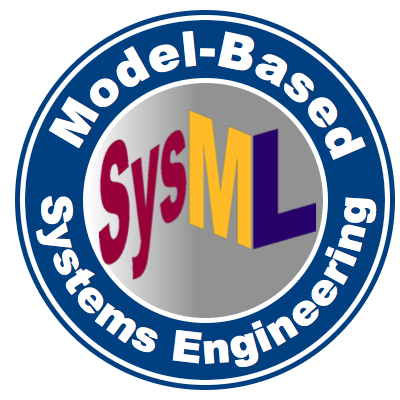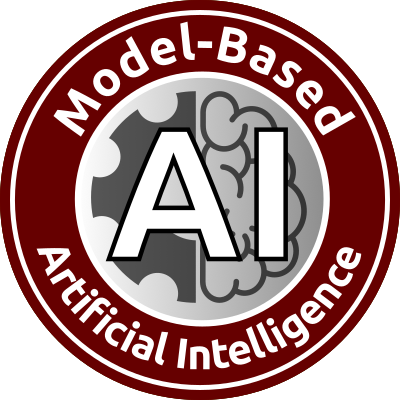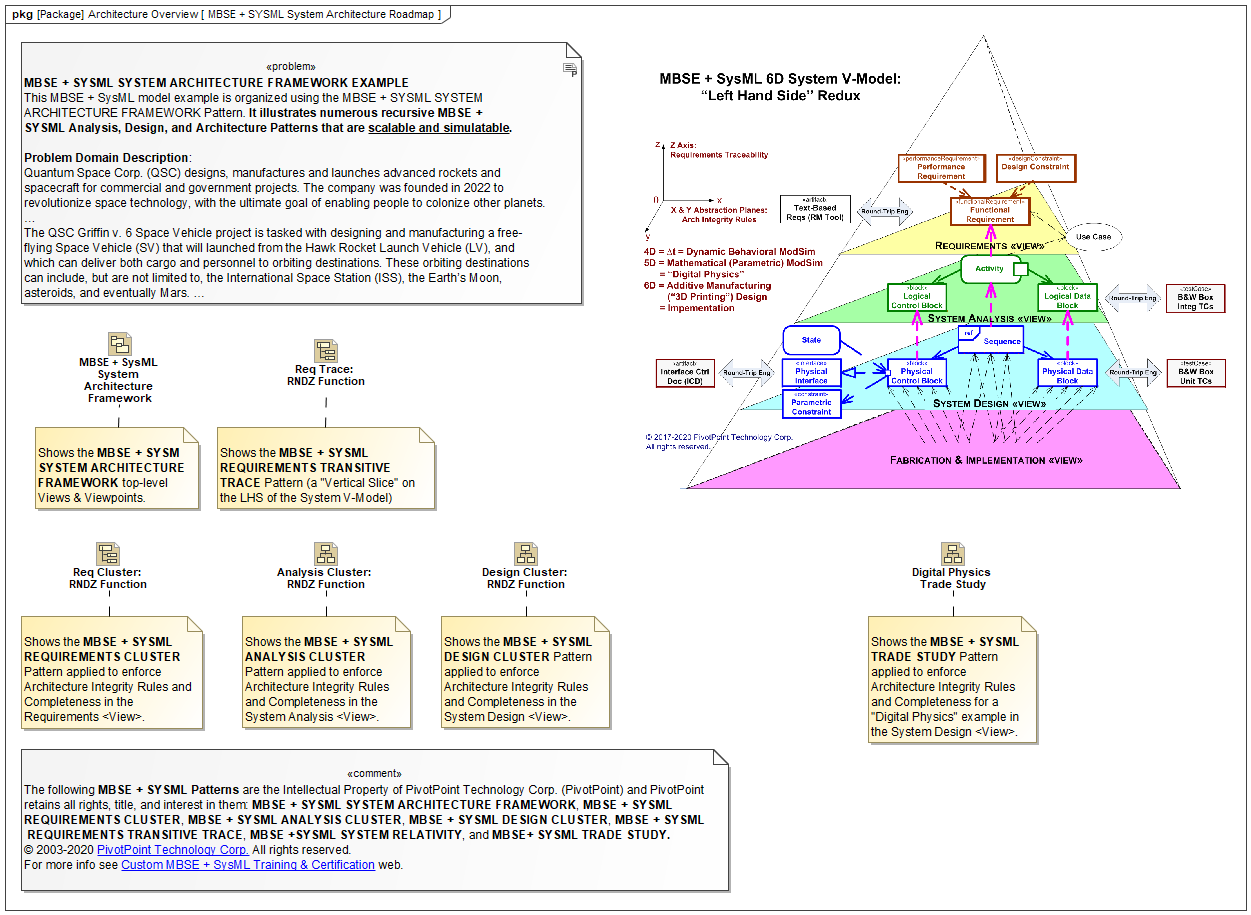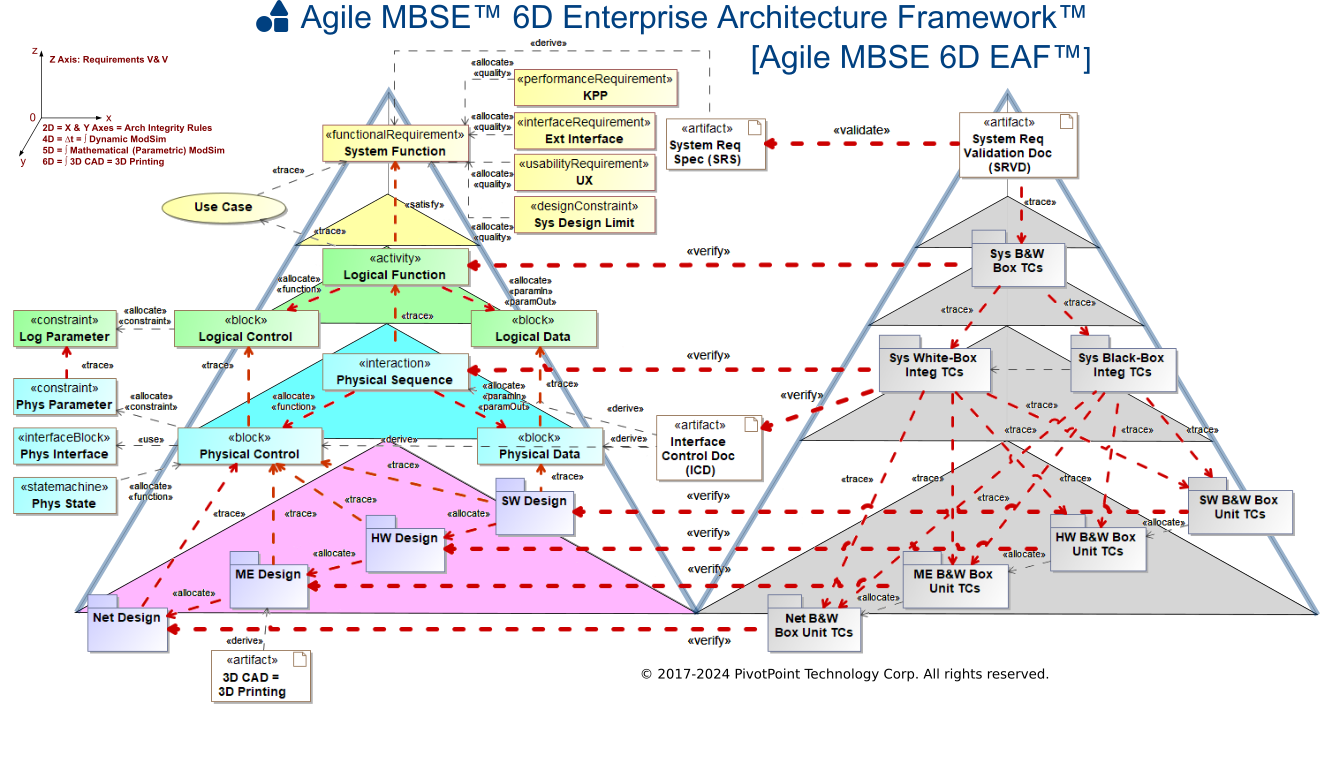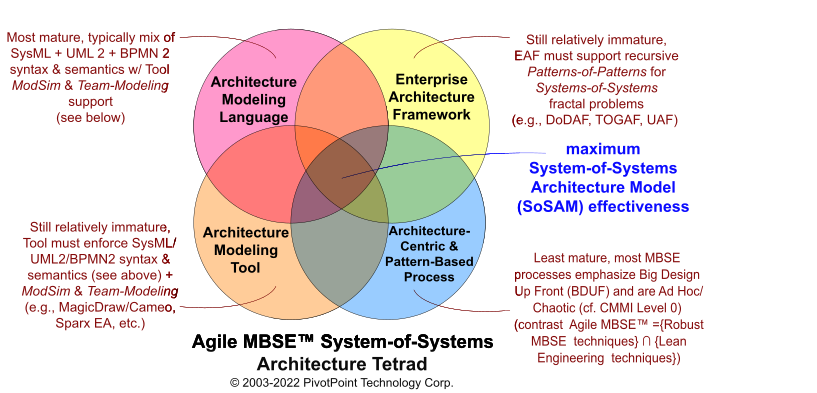How should SysML be applied to a MBSE project? How is SysML commonly abused?
How should SysML be applied to a MBSE project?
Question Variant(s): What are SysML best practices?; What are SysML antipatterns (worst practices)?; How is SysML properly used?; How is SysML commonly abused?; What is a good MBSE + SysML example?
As SysML emerges as the de facto standard for Model-Based Systems Engineering (MBSE) approaches, several SysML usage modes of progressive rigor have become evident:
- LEAST RIGOROUS & MOST COMMON USAGE MODE — SysML-as-Pretty-Pictures: This is the least formal and least rigorous SysML usage mode. Unfortunately, it is also the most common way that SysML is abused. In SysML-as-Pretty-Pictures usage mode SysML notation is used in lieu of ad hoc modeling notation (e.g., Visio or PowerPoint drawings), but relatively little attention is paid to SysML wellformedness and its underlying simulatable and executable semantics. Consequently, the SysML models generated in SysML-as-Pretty-Pictures mode are rarely capable of driving dynamic simulations or precisely specifying system architecture blueprints.
- SysML-as-Model-Simulation: This SysML usage mode is a significant improvement over SysML-as-Pretty-Pictures mode, since it emphasizes the simulation of system dynamic behavior and system parametric constraints. In SysML-as-System-Simulation mode at least some of SysML behavioral diagrams (Activity, Sequence, State Machine diagrams) are exercised by a behavioral simulation engine. In addition, some of the Parametric diagram constraints may also be exercised by a constraint propagation engine (MATLAB/Simulink, OpenModelica, SysML tool proprietary plugin, etc.). This is an intermediate SysML usage mode for those who seek to escape from SysML-as-Pretty-Pictures language abuse.
- SysML-as-System-Architecture-Blueprint: This SysML usage mode is a substantive improvement over SysML-as-Model-Simulation mode, since it extends the latter to include the the precise and complete specification of a System Architecture Model (SAM). The purpose of the SAM is to be sufficiently precise and complete to serve as the "system architecture truth" for all engineering processes involved in the system project, including systems engineers (SEs), software engineers (SWEs), electrical engineers (EEs), mechanical engineers (MEs), etc. In order for the SAM to serve as system architecture truth for a systems engineering project, the SAM must satisfy all Five C's of system architecture quality (Correct, Complete, Clear, Concise, and Consistent). This is a relatively advanced SysML usage mode, and is often a natural evolution of the SysML-as-System-Simulation mode.
- MOST RIGOROUS & RAREST SYSML USAGE MODE — SysML-as-Executable-System-Architecture: This SysML usage mode is a quantum improvement over the SysML-as-System-Architecture-Blueprint mode, since it extends the latter mode to make majority of SAM behavioral and parametric specifications simulatable, and potentially executable. Executable in MBSE context generally refers to the partial or fully automated generation of system interfaces, system test cases.
UML, BPMN, OMG SYSML and UPDM are trademarks of the Object Management Group.
TOGAF and ARCHIMATE are trademarks of The Open Group.
ENTERPRISE ARCHITECT is a trademark of Sparx Systems Pty Ltd. MAGICDRAW and CAMEO are trademarks of No Magic, Inc. RATIONAL RHAPSODY is a trademark of IBM.
All other trademarks are the property of their respective owners.
TOGAF and ARCHIMATE are trademarks of The Open Group.
ENTERPRISE ARCHITECT is a trademark of Sparx Systems Pty Ltd. MAGICDRAW and CAMEO are trademarks of No Magic, Inc. RATIONAL RHAPSODY is a trademark of IBM.
All other trademarks are the property of their respective owners.
© 2003-2024 PivotPoint Technology Corp. | Privacy | Contact Us
